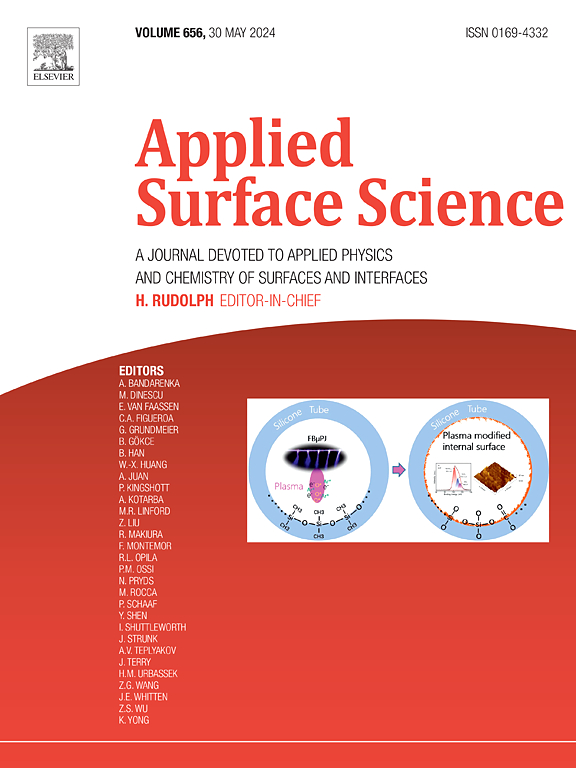Effect of GO on oxytetracycline and Cu2+ co-adsorption in a yellow–brown soil
IF 6.3
2区 材料科学
Q2 CHEMISTRY, PHYSICAL
引用次数: 0
Abstract
Coexistence of nanoparticles with organic–inorganic pollutants in soil can lead to changes in their environmental behaviour. Here, graphene oxide (GO), oxytetracycline (OTC), and Cu2+ were selected as typical pollutants, to elucidate the regulatory mechanism of GO on the adsorption behaviours of OTC and Cu2+ in yellow–brown soil through characterisation techniques, including XPS and FT-IR. The findings indicated that coexistence with GO improved the adsorption capacity of OTC or Cu2+ in both single and co-adsorption systems. In the single system, GO incorporation augmented the π-π interaction of the OTC aromatic ring with the soil C=O groups and the hydrogen bonding of the OTC hydroxyl group with the Si-O groups; conversely, for Cu2+, GO intensified the electrostatic attraction of Cu2+ to the soil –OH and Si-O groups. In the OTC + Cu2+ system, Cu2+ facilitated OTC adsorption via a “bridging effect,” while GO incorporation augmented hydrogen bonding between OTC and soil –OH and complexation with Al/Fe-O, while Cu2+ inhibited the hydrogen bonding between OTC and soil Si-O. For Cu2+, the incorporation of GO intensified complexation between Cu2+ and soil C=O and electrostatic interactions with –OH during the co-adsorption of OTC and Cu2+. Additionally, OTC enhanced the electrostatic interaction between Cu2+ and soil.

氧化石墨烯对黄褐色土壤中土霉素和Cu2+共吸附的影响
纳米颗粒与土壤中有机-无机污染物共存会导致其环境行为的变化。本研究选择氧化石墨烯(GO)、土霉素(OTC)和Cu2+作为典型污染物,通过XPS和FT-IR表征技术,阐明GO对黄褐色土壤中OTC和Cu2+吸附行为的调控机制。结果表明,在单吸附和共吸附体系中,与氧化石墨烯共存均能提高OTC或Cu2+的吸附能力。在单一体系中,氧化石墨烯的加入增强了OTC芳香环与土壤C=O基团的π-π相互作用,增强了OTC羟基与Si-O基团的氢键;相反,对于Cu2+, GO增强了Cu2+对土壤-OH和Si-O基团的静电吸引。在OTC + Cu2+体系中,Cu2+通过“桥接效应”促进了OTC的吸附,而GO的加入增强了OTC与土壤-OH之间的氢键和与Al/Fe-O的络合,而Cu2+抑制了OTC与土壤Si-O之间的氢键。对于Cu2+,氧化石墨烯的掺入增强了Cu2+与土壤C=O的络合作用以及在OTC和Cu2+的共吸附过程中与-OH的静电相互作用。此外,OTC增强了Cu2+与土壤之间的静电相互作用。
本文章由计算机程序翻译,如有差异,请以英文原文为准。
求助全文
约1分钟内获得全文
求助全文
来源期刊

Applied Surface Science
工程技术-材料科学:膜
CiteScore
12.50
自引率
7.50%
发文量
3393
审稿时长
67 days
期刊介绍:
Applied Surface Science covers topics contributing to a better understanding of surfaces, interfaces, nanostructures and their applications. The journal is concerned with scientific research on the atomic and molecular level of material properties determined with specific surface analytical techniques and/or computational methods, as well as the processing of such structures.
 求助内容:
求助内容: 应助结果提醒方式:
应助结果提醒方式:


